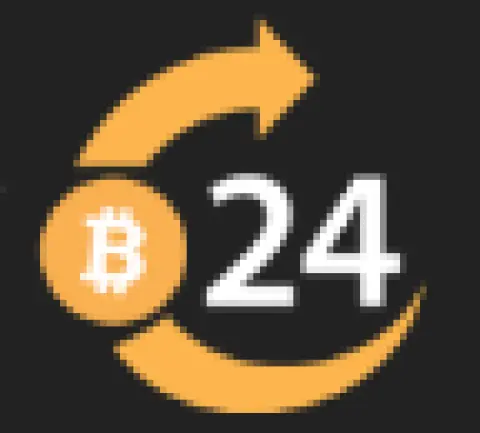Table of Contents:
BIS Proposes Wallet Scoring – A Threat to Bitcoin Fungibility?
On August 13, the Bank for International Settlements (BIS), often referred to as the "central bank of central banks," published a working paper titled "An approach to anti-money laundering compliance for cryptoassets." The paper outlines a new strategy for anti-money laundering (AML) monitoring of permissionless blockchains such as Bitcoin and Ethereum. The core idea is to use public transaction data to calculate an "AML compliance score" for individual coins or wallets. This score would then be checked at "off-ramps"—points where crypto is exchanged for fiat currency. Coins or wallets below a certain threshold would be blocked.
The BIS proposal suggests that every wallet address or coin should be rated based on its transaction history, on a scale from 0 to 100:
The Best Mining Providers at a Glance
» Infinity HashFrom our perspective, currently the best mining provider on the market. With the community concept, you participate in a mining pool completely managed by professionals. A portion of the earnings are used for expansion and maintenance. We've never seen this solved as cleanly anywhere else.
» Hashing24A well-known and established cloud hosting company. With a good entry point and in a good market phase, a good ROI can also be generated with some patience. Unfortunately, we see the durations as a major drawback.
| Score | Description |
|---|---|
| 100 | Coins originate exclusively from addresses on an "allow-list" |
| 0 | Direct connection to addresses on a "deny-list" |
| Intermediate | Depends on "proximity" to suspicious addresses |
The model can be implemented strictly (only allowed addresses are acceptable) or loosely (only direct contacts with forbidden addresses are problematic), with more complex gradations possible, such as waiting periods, interaction bans, or transaction amount restrictions. The BIS also names stablecoins as a particularly suitable test field, since central issuers can already freeze accounts. For Bitcoin, the technical feasibility is given due to the public UTXO history.
A similar approach is already seen in the "Ordinals Protocol," which allows individual satoshis to be identified by their history, creating a market for "rare sats." However, the BIS scoring system would introduce regulatory distinctions with potentially serious consequences for Bitcoin's fungibility.
Attack on Fungibility
Fungibility means that every unit of a good is equivalent. A state-imposed scoring system would destroy this property—at least within the system applying the scoring, though the Bitcoin network itself would remain unaffected. There would suddenly be "clean" and "dirty" bitcoins, differing in tradability and possibly even price. In the BIS model, even receiving a coin second- or third-hand could result in a poor score, regardless of the recipient's knowledge of its history, effectively creating collective liability.
By blocking transactions at off-ramps, a filtering infrastructure is created that could be repurposed for other political or economic goals, such as capital controls or targeted sanctions. The maintenance and control of "allow-lists" and "deny-lists" would grant significant power over Bitcoin's usability in the regulated financial world, with little prospect for transparent, democratic oversight.
Bitcoin vs. Fiat System
The BIS proposal raises not only technical but also strategic questions for Bitcoin users. Those who rely on "no-KYC" coins—bitcoins acquired without identity verification—avoid state control and maintain maximum privacy, but risk having these coins blocked or devalued when interacting with the regulated financial system. This could lead to a dilemma: either remain mostly in the fiat system and accept stricter controls, or shift to a Bitcoin-based economic cycle, using fiat only in exceptional cases.
Reducing interactions with fiat off-ramps and AML scoring systems requires a conscious change in financial habits and a growing ecosystem of communities and markets that accept Bitcoin directly. The broader the offering, the easier it becomes to stay within the Bitcoin ecosystem and bypass the pressures of the fiat system.
This BIS bulletin is not yet a concrete regulatory plan but a thought experiment by the authors, not necessarily reflecting the official BIS position. However, the mere fact that such ideas are being considered by central bankers should be cause for concern among Bitcoiners. Often, it is only a small step from theoretical concepts to political initiatives and legislative measures.
- BIS proposes a wallet scoring system for AML compliance on blockchains.
- Scores range from 0 (deny-list) to 100 (allow-list), with regulatory consequences for coins/wallets below thresholds.
- Potential threat to Bitcoin fungibility and user privacy.
- Could force users to choose between fiat integration and a Bitcoin-only economy.
Source: Blocktrainer
Bitcoin Treasury Boom: Strategy Could Overtake Apple in Market Capitalization
The Bitcoin treasury trend is reaching a new peak in 2025, becoming a central topic in financial markets. Companies like Strategy (formerly MicroStrategy) have evolved from pioneers to symbols of this movement. Increasingly, publicly traded and private companies are officially disclosing their Bitcoin holdings—a step that was rare just a few years ago. The recent Bitcoin all-time high of 124,000 US dollars has amplified this effect, resulting in massive book profits for early-adopting companies.
Analyst Adam Livingston describes Strategy as a company that is not dependent on constant product innovation but systematically accumulates "the hardest asset in the world." While traditional tech companies must develop new devices to maintain revenue streams, Strategy relies on the mathematically limited scarcity of Bitcoin. The model is based on three core principles: cash loses value, hard assets gain; fashion trends are subjective, monetary physics is constant; time rewards disciplined accumulation.
| Company | Market Position | Strategy |
|---|---|---|
| Strategy | Not in Top 100 | Accumulates Bitcoin |
| Apple | Among the most valuable companies | Product innovation |
Livingston contrasts this with Apple, which, despite enormous revenues, operates in an environment of declining purchasing power and regulatory risks. If Bitcoin growth continues and premium valuation remains stable, Strategy could rise to the top group of global companies and even surpass Apple in market capitalization within a decade.
The Bitcoin ecosystem is also expanding through projects like Bitcoin Hyper, which aims to combine the security of the Bitcoin blockchain with the advantages of modern high-performance networks. The project plans a Layer-2 architecture with high transaction speed, low fees, and flexible programming options. The ongoing presale has already raised about 10 million US dollars, with a staking program currently offering around 130 percent APY.
- Bitcoin treasury trend is accelerating, with more companies disclosing holdings.
- Strategy's business model is based on disciplined Bitcoin accumulation.
- Analysts see potential for Strategy to surpass Apple in market capitalization.
- Bitcoin Hyper is developing a Layer-2 solution, raising 10 million US dollars in presale.
Source: Wallstreet Online
Four Untapped Developments Could Boost Bitcoin and Crypto: Bitwise
Matt Hougan, CIO of Bitwise, highlighted four developments that could trigger further upside for the crypto market, which have not yet been priced in. Hougan noted that a potential interest rate cut combined with a weakening US dollar would be positive for Bitcoin. He also mentioned that SEC Chairman Paul Atkins' desire to revive ICOs could be a catalyst for price growth.
- Government Demand: More governments and nations are expected to add cryptocurrencies to their reserves. ETFs have purchased 183,126 BTC, and public companies have acquired 354,744 BTC, but government demand remains low. Hougan expects more countries to join this trend by the end of the year, establishing it as a key catalyst for 2026.
- Weak Dollar: The appointment of Stephen Miran, a strong proponent of a weak dollar, to the Federal Reserve board and several expected rate cuts by year-end are seen as strong price catalysts. If significantly lower rates and a weaker dollar materialize, Bitcoin could trade much higher.
- Low Volatility: The decline in Bitcoin volatility, especially since the introduction of spot BTC ETFs in January 2024, has increased the chances of institutional portfolio allocation. Since July 1, net inflows into Bitcoin ETFs have reached 5.6 billion US dollars, which would annualize to nearly 50 billion US dollars.
- ICO Market Revival: The SEC's "Project Crypto" roadmap could create a regulated "ICO market 2.0," attracting significant capital to the market.
Hougan believes that even a few more national announcements regarding Bitcoin reserves could significantly drive prices higher. The report also notes that the stabilization of the Bitcoin price around 118,900 US dollars and the anticipation of US inflation data could lead to further volatility.
- Four key catalysts: government demand, weak dollar, low volatility, and ICO market revival.
- Bitcoin ETFs have seen 5.6 billion US dollars in net inflows since July 1.
- Potential for significant price increases if these factors materialize.
Source: DE.COM (FXStreet)
How Many People Really Own a Full Bitcoin?
According to finanzen.ch, nearly one million wallet addresses currently hold at least one full Bitcoin. However, the actual number of individuals who own a complete BTC is significantly lower. The blockchain reveals the number of addresses and the amount of Bitcoin they hold, but not how many people are behind them. Many investors spread their holdings across multiple wallets, and crypto exchanges often store the funds of millions of users in a few addresses. Large companies or funds also distribute their holdings across many addresses for security reasons.
Investopedia estimates that there are about 983,000 addresses with at least one Bitcoin, but only between 800,000 and 850,000 people actually own a full Bitcoin. The largest wallet holds 248,598 BTC, accounting for just 1.25 percent of the total supply, and is attributed to the crypto exchange Binance. This is the only wallet address with more than one percent of all bitcoins.
| Metric | Value |
|---|---|
| Addresses with ≥1 BTC | 983,000 |
| Estimated actual owners | 800,000–850,000 |
| Largest wallet | 248,598 BTC (1.25% of supply) |
| BTC in circulation | ~20 million |
| Maximum BTC supply | 21 million |
| Addresses with >$100,000 | 1,145,000 |
Owning a full Bitcoin is now considered rare and exclusive. The majority of crypto holders own only fractions of a Bitcoin or other cryptocurrencies. The scarcity of whole bitcoins makes ownership a symbol of exclusivity and a goal that few can achieve.
- 983,000 addresses hold at least one Bitcoin, but only 800,000–850,000 people are estimated to own a full BTC.
- The largest wallet (Binance) holds 248,598 BTC, or 1.25% of the total supply.
- About 20 million of the maximum 21 million bitcoins are in circulation.
- Owning a full Bitcoin is increasingly rare and exclusive.
Source: finanzen.ch
Bitcoin to $400,000? Crypto Expert's Bold Thesis
In an exclusive interview with Cointelegraph, crypto analyst Udi Wertheimer presents a bold price prediction for Bitcoin. Wertheimer argues that over the past five years, institutions have quietly bought up old Bitcoin investors, fundamentally changing the market. He explains that both old Bitcoin investors and retail holders have gradually sold their coins to invest in Ethereum, Solana, or other assets.
"In the past five years, they have bought up old Bitcoin investors," says Udi. "Both old Bitcoin investors and small investors, who always kept part of their Bitcoin and then gradually sold them to invest in Ethereum (ETH) or Solana (SOL) or whatever."
Wertheimer points to Michael Saylor's strategy as a prime example: "If Saylor doesn't buy more Bitcoins for a long period, his company loses all its value... He must constantly come up with new, original ways to raise capital to buy Bitcoin." According to Wertheimer, this is unprecedented. "In the past, there were many cases of forced sales in Bitcoin... This is the first time we have forced purchases—structural forced purchases—that must be made under all circumstances."
He concludes that we are at the end of the capital rotation from old investors and heading toward a supply squeeze that could trigger explosive price movements. "Wall Street has bought all our Bitcoin, and we didn't even notice."
- Institutions have been accumulating Bitcoin from old investors over the past five years.
- Michael Saylor's strategy exemplifies the new era of "forced purchases."
- Wertheimer predicts a supply squeeze that could lead to explosive price increases, with a target of 400,000 US dollars for Bitcoin.
Source: Cointelegraph: Bitcoin & Krypto-Nachrichten
Sources:
- BIS schlägt Wallet-Scoring vor – Angriff auf die Fungibilität von Bitcoin?
- Krypto-Steuertransparenzgesetz: Wie der Staat Werbung für Bitcoin macht
- Bitcoin-Treasury-Boom: Strategy könnte Apple bei Marktkapitalisierung überholen
- Bitcoin- und Krypto könnten aufgrund dieser vier ungenutzten Entwicklungen einen Aufschwung erleben: Bitwise
- Statistik zeigt: So viele Menschen besitzen wirklich einen vollständigen Bitcoin
- Bitcoin bald auf 400.000 US-Dollar – Krypto-Experte im Interview mit steiler These




















